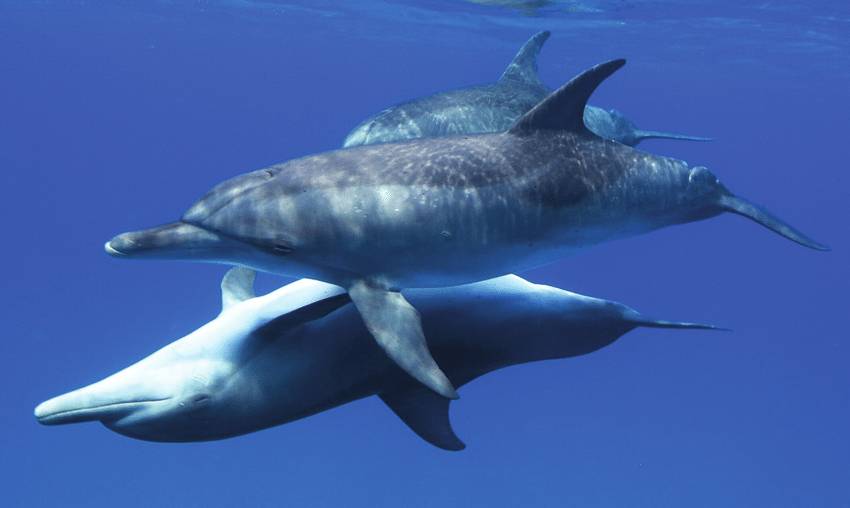Communication between dolphins is a natural phenomenon that scientists are still trying to decipher to this day. Like us, these intelligent animals do not exclusively use sound, and in fact have several ways in which they are able to interact and engage with one another. Echolocation
Although echolocation is not necessarily purely a communication strategy, there has been some evidence of the technique being used successfully to both send and receive information. Echolocation is a method of sonar used by the cetaceans to visualise their surroundings, and it has been proven that they can recognise the individual sonar clicks of others nearby. Consequently they are able to identify the object that the other is echolocating by visualising it themselves. Scientists are currently researching further into this complex communication tool.
Tactile cues
The sensitive skin of a dolphin facilitates the use of subtle tactile cues, which are hugely important for them when building and maintaining relationships within their species. Rubbing against each other using the pectoral fins is just one example of how they use tactility to express affection. However, contact also occurs in aggressive behaviour and powerful slams of the tail can cause significant injuries to another animal.
Vocal cues
Observers on a dolphin cruise can quite often hear the whistles, chirps and shrills of wild dolphins. These particular vocal signals are known as ‘pure tones’, and frequently change in pitch. However, not all of them can produce these sounds, and are limited to ‘pulsed sounds’ which are slightly different. Pulsed sounds, or clicks, can be emitted up to 200 times per second, and can convey excitement, anger and a range of other emotions.
Visual cues
Like humans, dolphins communicate largely through gestures and movements. For example, forming their bodies into various shapes can convey anger or act as a warning signal. They also flare their pec fins and open their jaws during aggressive encounters in an attempt to threaten their challengers. Any synchronous behaviour portrays a close relationship, however dipping of the head is an aggressive gesture.
Visual cues also come in the form of markings and body types. Several species have evolved specific markings that indicate factors such as their age. Scarring from violent encounters with other animals also acts as a visual cue as to their position in the hierarchy.
Non-vocal acoustic cues
Tail slaps tend to be the most common non-vocal acoustic cue, and can signify not only aggression, but danger and hunting techniques (tail slaps can create a powerful blow that stuns the fish in the water).
In addition to this, incredibly loud sounds can be produced when the animal claps its jaws together. The force produces an acoustic signal that can travel great distances, expressing aggression or playfulness. Sounds generated from breaching (leaving the water and crashing back to the surface) can also travel long distances due to their low frequency. Again, this action is an example of the animal’s more violent behaviour.
To experience the phenomena of this fascinating communication the wild, the best way of guaranteeing the best sightings is on a dedicated dolphin cruise with a specialist nature tour company. Participants travel to the best viewing spots and enjoy the expertise of an experienced naturalist and local guides.
Author Plate
Marissa Ellis-Snow is a freelance nature writer with a special interest in marine wildlife. As a passionate lover of dolphins, Marissa chooses the expert-led dolphin cruise itineraries organised by Naturetrek, which have brought her unforgettable sightings of a wide range of wildlife in some of the most spectacular regions on Earth.


